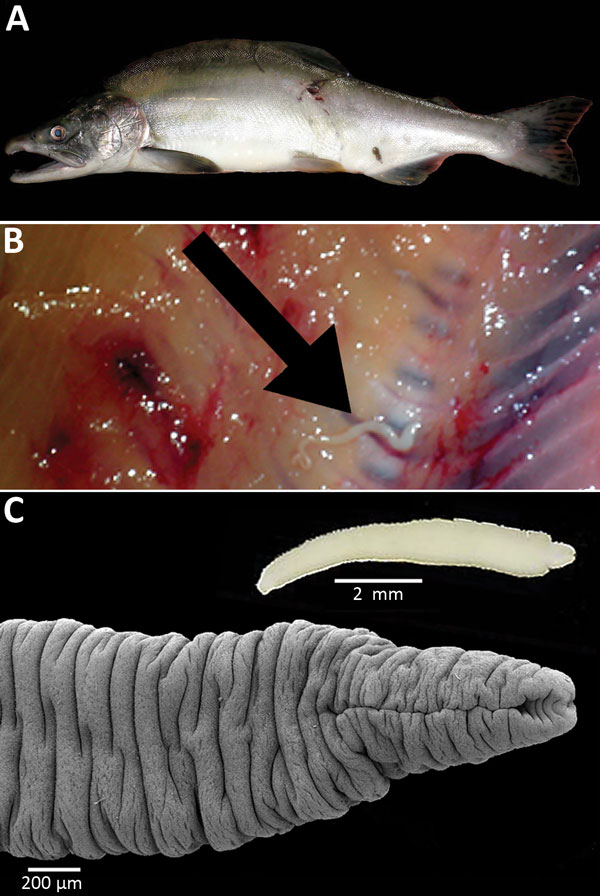Volume 23, Number 2—February 2017
Research Letter
Diphyllobothrium nihonkaiense Tapeworm Larvae in Salmon from North America
Figure

Figure. A) Pink salmon (Oncorhynchus gorbuscha) from Alaska, USA. B) Plerocercoid of Japanese broad tapeworm (Diphyllobothrium nihonkaiense) (arrow) deep in the muscles of the salmon. C) Live D. nihonka plerocercoid in saline (inset) and scanning electron micrograph after fixation with hot water; note the scolex with a long, slit-like bothrium opened anteriorly.
Page created: January 18, 2017
Page updated: January 18, 2017
Page reviewed: January 18, 2017
The conclusions, findings, and opinions expressed by authors contributing to this journal do not necessarily reflect the official position of the U.S. Department of Health and Human Services, the Public Health Service, the Centers for Disease Control and Prevention, or the authors' affiliated institutions. Use of trade names is for identification only and does not imply endorsement by any of the groups named above.